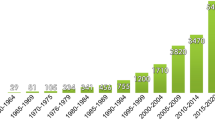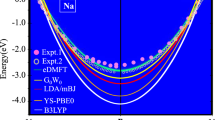Abstract
WE have had the opportunity of seeing Dr. Farineau's letter before it was sent to press. We have recently observed the M-emission bands of nickel, copper and zinc metals, and it seems worth while to add a note, since the two sets of results, especially taken together, allow one to draw certain conclusions about the structure of the 3d- and 4s(conduction)-electron bands in these metals.
This is a preview of subscription content, access via your institution
Access options
Subscribe to this journal
Receive 51 print issues and online access
$199.00 per year
only $3.90 per issue
Buy this article
- Purchase on Springer Link
- Instant access to full article PDF
Prices may be subject to local taxes which are calculated during checkout
Similar content being viewed by others
References
Skinner and Johnston, Proc. Roy. Soc., A, 16, 420 (1937).
See O'Bryan and Skinner, Phys. Rev., 45, 370 (1934).
See Mott and Jones, “The Theory of the Properties of Metals and Alloys”, chap. vi.
Author information
Authors and Affiliations
Rights and permissions
About this article
Cite this article
SKINNER, H., JOHNSTON, J. M-Emission Bands of Zinc, Copper and Nickel. Nature 140, 508–509 (1937). https://doi.org/10.1038/140508c0
Issue Date:
DOI: https://doi.org/10.1038/140508c0
Comments
By submitting a comment you agree to abide by our Terms and Community Guidelines. If you find something abusive or that does not comply with our terms or guidelines please flag it as inappropriate.



